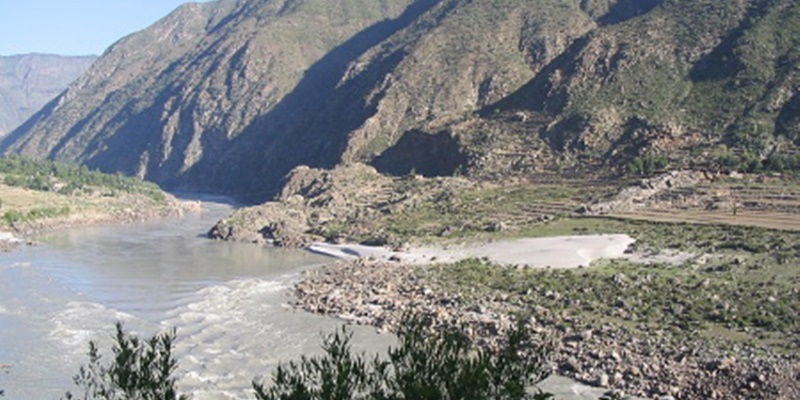Published in telegraph.co.uk – Last Updated: 12:01am – BST – 17/05/2008
Peter Parker reviews Empires of the Indus: the Story of a River by Alice Albinia
The River Indus rises in Tibet and flows west through northern India before turning south through Pakistan to the Arabian Sea. Like many rivers, it has often acted as a border, marking off Baluchistan from Sindh and the North West Frontier Province from the Punjab, or halting the progress of invaders from the West.
A rather more arbitrary border was created in 1947 by Partition, which among other things left the “heartland” of the Rig Veda, one of Hinduism’s most sacred texts, in the Islamic Republic of Pakistan.
The Indus, however, is also a place where syncretism survives, and the confluence of its waters sometimes seems like a metaphor running through Alice Albinia’s impressive and original first book. Unlike the Ganges, which is sacred only to the Hindus, the Indus has spiritual and historical significance for Muslims, Buddhists and Sikhs.
At one point, Albinia looks out from the militarised zone to where the lethally disputed territory of Jammu and Kashmir “opens up like the wings of a green and yellow butterfly on a dull brown rock”.
This intensifies her sense, present throughout the book, that with Partition, “the citizens of India and Pakistan have suffered the stifling of their mutual history, and the loss of access to lands, languages and faces that were once part of their shared vocabulary”.
Albinia travels back along the Indus from its delta to its source, but also travels backwards in history, from “1947” to “50 million years ago” as the chapters’ subtitles have it, describing the many civilisations that have flourished in the Indus Valley.
Like the river itself, and indeed history, her narrative is not as linear as this might suggest, and much of the most fascinating material is found in its tributaries.
In Sindh we meet the Sheedi, dark-skinned Muslims with tightly curled hair. They are supposedly descended from an Ethiopian slave who became not only one of the Prophet’s first converts but also his first muezzin because of his “sonorous voice”.
We also learn about the “socialist Sufi” Shah Inayat, a landowner who in the early 18th century founded a short-lived and violently suppressed agricultural commune, inviting indentured peasants to farm his land for free.
Among the “river saints” is the highly unorthodox figure of Sarmad, a 17th-century Persian-Jewish merchant who converted to Islam, took a 14-year-old Hindu boy as his lover, and wandered India naked like a sadhu, writing poetry. Although he was eventually executed for blasphemy, he is buried near the Jama Masjid in Delhi, where his tomb is visited by Hindus and Muslims alike.
A similar coming together of often bitterly divided people can be observed at the tomb of Sindh’s most famous Sufi poet and saint, Shah Abdul Latif (1689-1752). His collected verse retells “the stories and legends that have been recounted along the banks of the Indus for generations” and exemplifies “the easy spiritual interaction” of different faiths. Hindus and both Sunni and Shia Muslims all descend on Bhitshah in Pakistan to celebrate his urs or death-anniversary in dance and song.
In the course of her long journey, Albinia encounters all kinds of danger, and at times her courage tips into foolhardiness. A lone woman, her passport unstamped, she crosses the Pakistani-Afghan border illegally; she relies on a Tibetan town drunk to lead her on a gruelling journey to the remote source of the Indus; she imagines she is going to die after consuming majoon that contains not only “a liberal dollop of hashish butter” but (among other things) warthog testicles, sparrow’s brain and lapis lazuli. This, however, is the behaviour we expect of the best kind of travel writer.
Empires of the Indus is in part an elegy, its final chapter titled “The Disappearing River”. When Albinia arrives at the upper reaches of the Indus at Ali in Tibet, she stands on its banks wondering whether she can be in the right place: “There is a blue boot and a bicycle tyre where the water should be; Chinese instant-noodle packets are scattered about like flowers – but where is the water?”
The water, it transpires, is behind a vast new dam built by the Chinese. Elsewhere along its course, the river has been irresponsibly bled for irrigation.
She concludes by imagining a future in which the Indus, “which once ‘encircled Paradise’, bringing forth civilisations, species, languages and religions”, is reduced by mankind’s ecological profligacy to “nothing but dry riverbeds and dust”.



